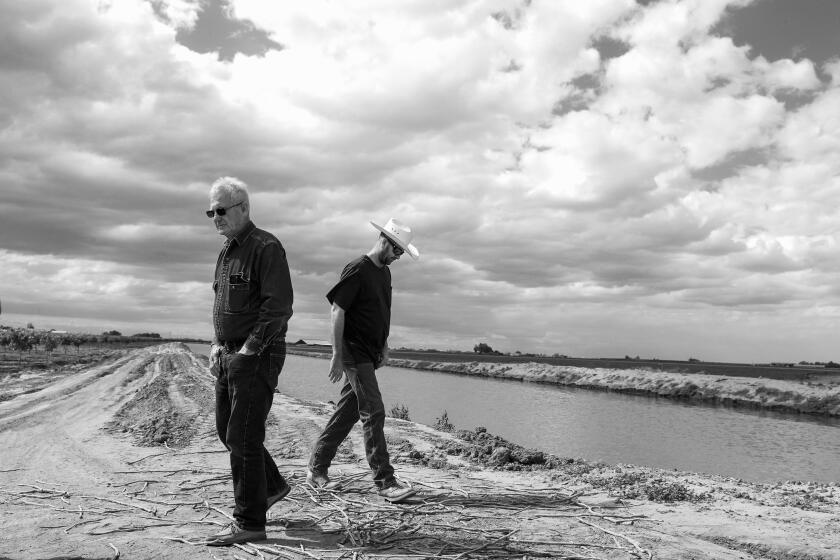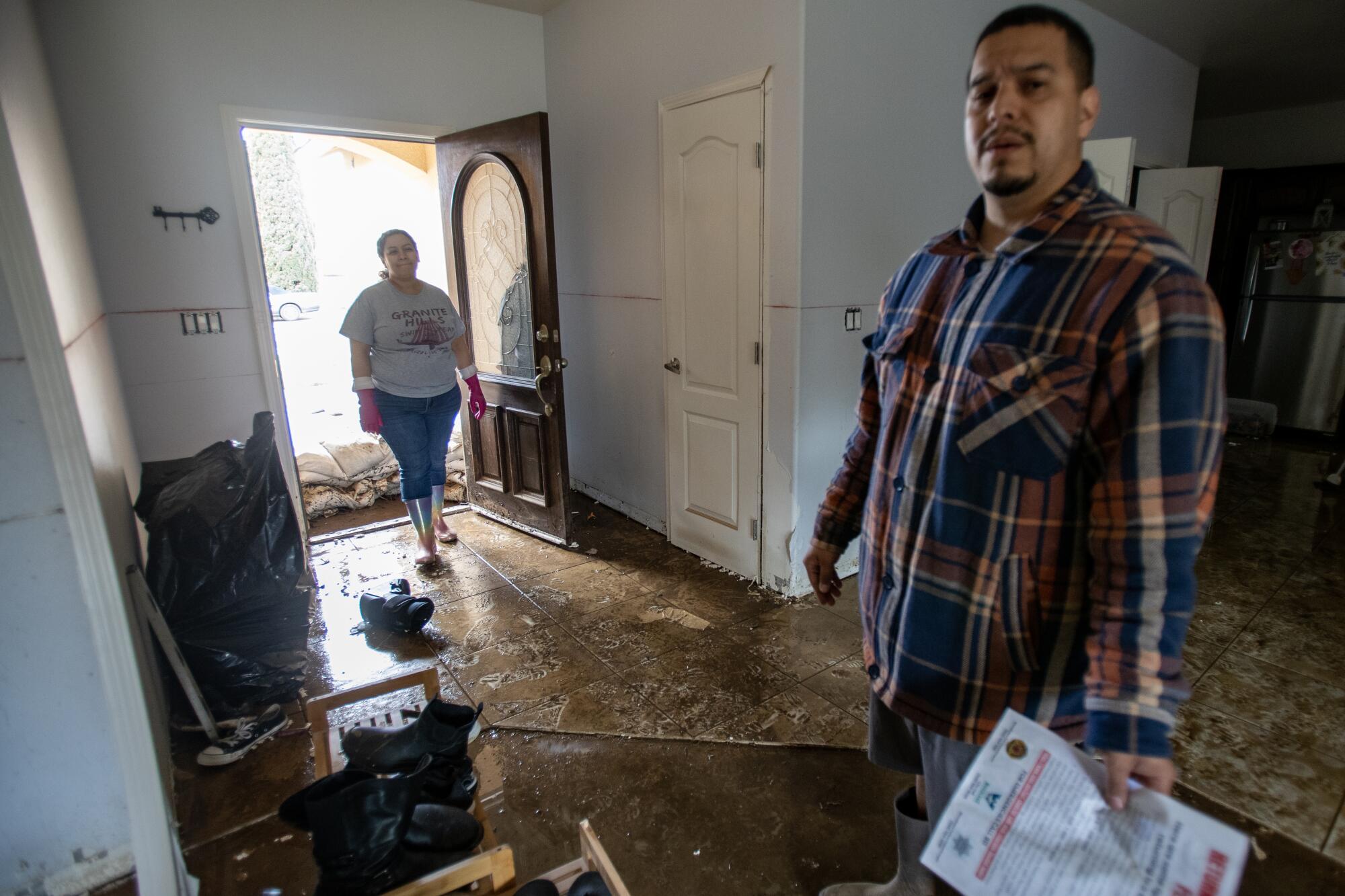
- Share via
One March morning in the small Central Valley town of Woodlake, Joshua Diaz was getting out of bed when he noticed that his carpet was bubbling and that his tile floor had grown slick. He tried to open his front door but felt pressure and saw water slipping through its seams.
“There was more water outside than inside,” Diaz recalled. “We were surrounded.”
Outside, torrential downpours — the likes of which some lifelong residents of his small Tulare County town had never seen — filled rivers, clogged storm drains and sent water gushing through streets and into people’s homes.
Aggressive and impactful reporting on climate change, the environment, health and science.
By the time he escaped through a bedroom window with his wife, Amada, and their two sons, ages 8 and 4, there was little left to save. Knee-deep water had filled their home, causing about $65,000 worth of damage.
“You always want to keep your kids safe and secure, and it’s hard to think of going back to a home that might flood, or might get ruined, and you’re jeopardizing your children’s lives,” said Diaz, who was born and raised in the tiny town at the base of the Sierra Nevada foothills.
“If we rebuild, are we going to be safe? If we invest our money back into our homes, will our investment be sound?”
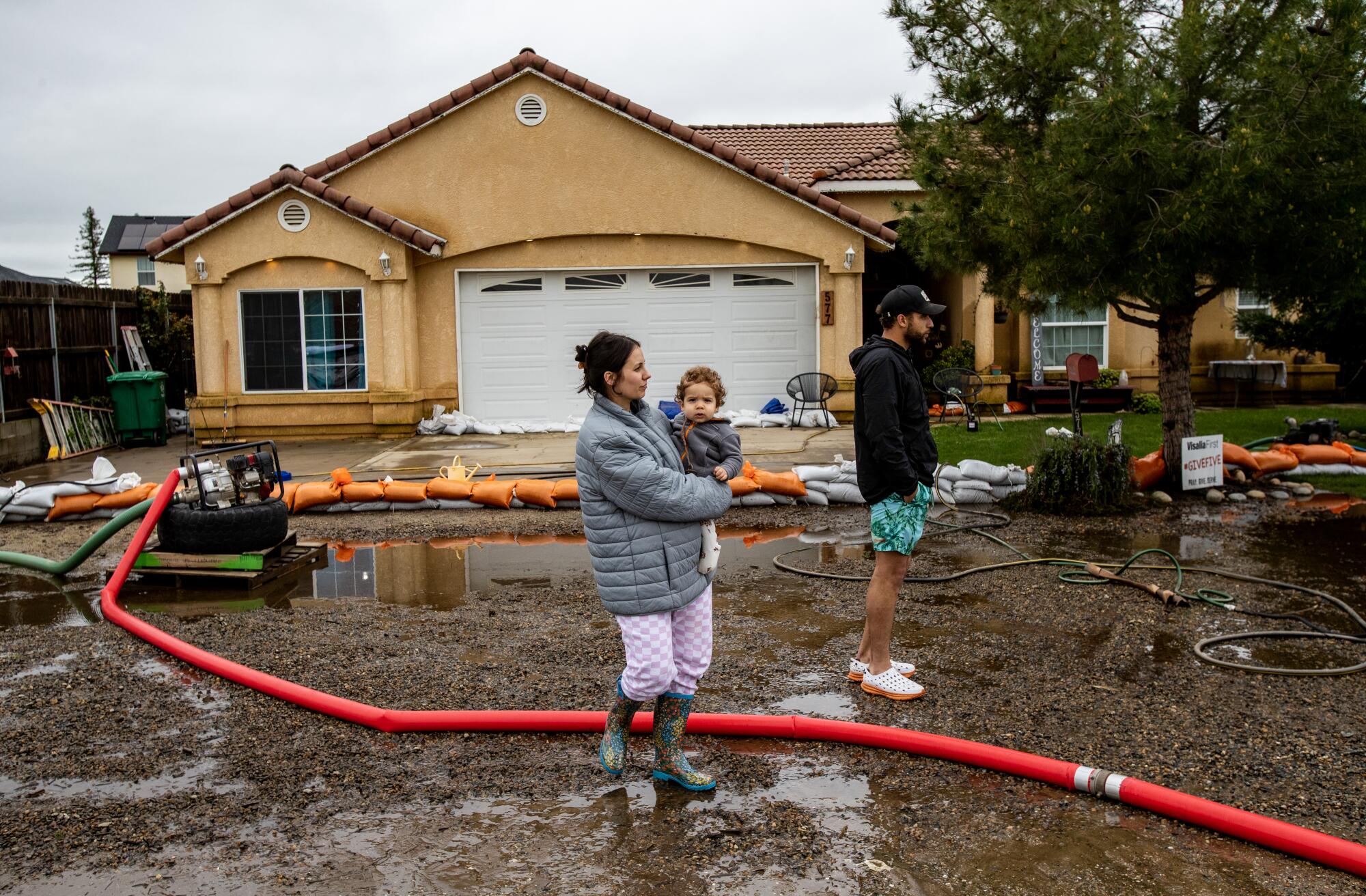
It’s a question many residents of California’s Central Valley are asking themselves — particularly those in the fertile southern region.
Home to more than 4 million people, the vast San Joaquin Valley lies flat and low between the Sierra Nevada and the Southern Coast Range and has long been prone to climate hazards.
Lately, however, they seem to be converging at a breakneck pace. The floods arrived following three years of severe drought, while extreme heat, lung-searing smog and hazardous wildfire smoke have become all-too-common occurrences. Meanwhile, the very earth beneath their feet is sinking.
Experts say it’s not just bad luck that has made the San Joaquin Valley one of the front lines of climate change in America. Dramatic land use changes, a dearth of resources and state support, and a recalcitrant political climate fueled by agriculture and fossil fuel drilling have all contributed to the region’s challenges. How it adapts could be a case study for the rest of the nation.
Tulare Lake’s rebirth will reshape life in the San Joaquin Valley for years to come. But longtime residents remain committed to the region and its remarkable seasonal rhythms.
As recently as a century ago, the valley was the humid home to ephemeral rivers, lakes and wetlands. But its rapid transition toward industrial agricultural — which turned it into one of the most fruitful food production regions in the world — sapped the valley’s water and aridified its landscape.
“In my opinion, the San Joaquin Valley is the region of California that has suffered the most extreme transformation in the whole state,” said Angel Santiago Fernandez-Bou, lead author of the San Joaquin Valley Region Report for California’s fourth climate change assessment. “Basically, we have destroyed 95% of the original wetlands.”
Even Tulare Lake, once the largest freshwater lake west of the Mississippi River, was drained to make room for fields of cotton, tomatoes, almonds and other crops. Once every couple of decades, it refills in dangerous and dramatic fashion, as it did during heavy rains earlier this year.
Land transformation in the San Joaquin Valley has decreased its natural resilience to extreme environmental events such as drought, floods and heat, according to Fernandez-Bou, who is also western states senior climate scientist with the Union of Concerned Scientists.
Land barons seized control of the Tulare Lake Basin generations ago. This year’s destructive flooding left troubling questions about the power they wield.
And it is getting more extreme. His regional report predicted that all valley counties could go from four or five extreme-heat days per year to as many as 68 by the end of the century. Already, Fresno saw 65 days over 100 degrees last year, and Merced recorded its hottest temperature ever, 116 degrees, in September 2022.
“It’s almost like the forecast for the middle, late century — we’re seeing it right now,” Fernandez-Bou said.
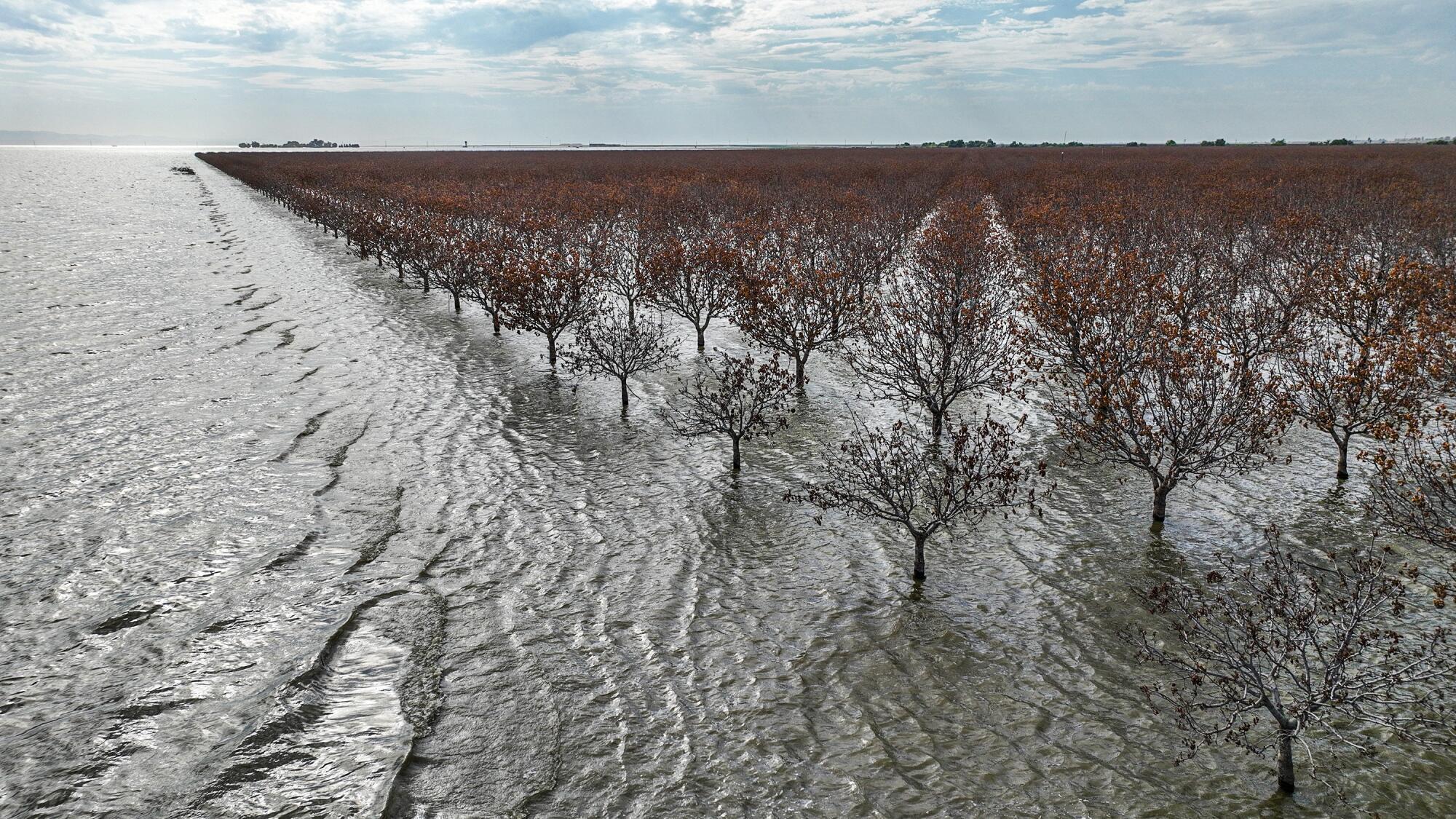
Although climate change is exacerbating those extremes, he and other experts said the region’s bowl-shaped topography also contributes to heat and other hazards, as it enables smog, fine particulate and wildfire smoke to get trapped inside the basin.

Subscribers get exclusive access to this story
We’re offering L.A. Times subscribers special access to our best journalism. Thank you for your support.
Explore more Subscriber Exclusive content.
“You have wildfire smoke, you have pollution from the cities that blows in here, but there’s also a lot of dust being made through the tilling of the soil,” said Chantelise Pells, community engagement director with the nonprofit SocioEnvironmental and Education Network in Merced. “So there is a lot of pollution that is created in the valley, but also, it’s the actual topography of California that it just sits there.”
The San Joaquin Valley has some of the worst air quality in the nation, and consistently fails to meet federal health standards for both smog and particulate air pollution, according to the U.S. Environmental Protection Agency.
The compounding hazards mean many residents are faced with the dilemma of turning on air conditioners that they can’t always afford to use, or opening their windows and suffering from poor air quality, pesticide exposure and extreme heat, Pells said.
“There are a lot of impossible decisions,” she said.
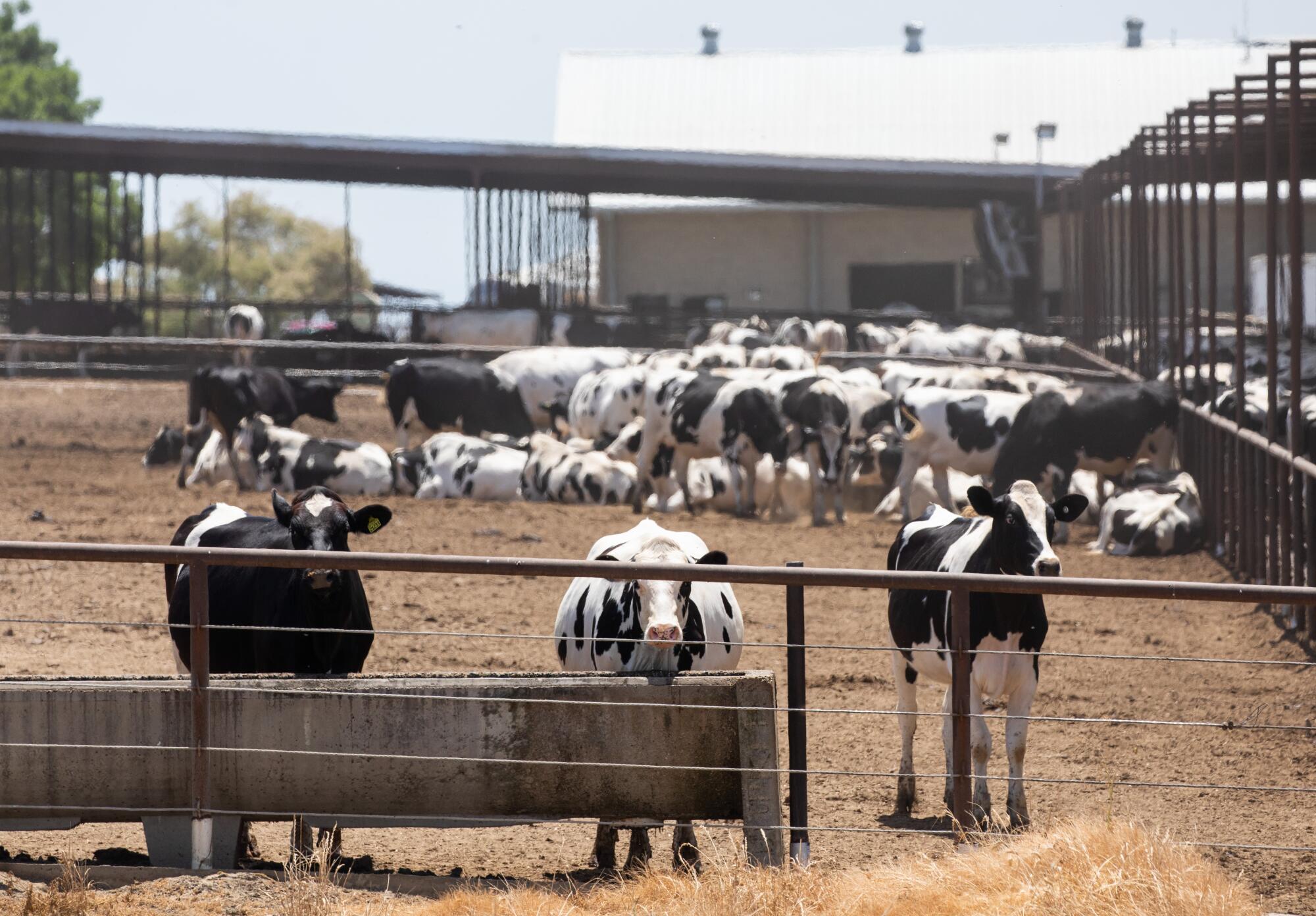
It was against that backdrop that the floods arrived early this year. They came from a series of powerful atmospheric rivers, and on the heels of the state’s driest three years ever recorded.
In the Tulare County town of Lindsay, about 17 miles south of Woodlake, Luis Creek swelled, surged and breached three levees during the storms.
The community mobilized quickly — working with Federal Emergency Management Agency representatives, local nonprofits and even a high school football team to quickly patch the breaches with sand and turf. But about 150 homes were ultimately damaged or destroyed, according to Hipolito Cerros, the town’s mayor.
Cerros in some ways knew to expect such challenges. Many of his constituents — as well as some of his own family members — struggled with water supply shortages during the drought, and have also developed breathing illnesses because of the poor air quality, he said.
At a community meeting the day after the flood, the mayor said he heard from several people who were reconsidering their future in Lindsay.
“It’s unfortunate because this is my home — I grew up here,” Cerros said. “I love my community. I love the Central Valley. To see residents feel as if they’re not being taken care of from the local, state and federal level is unfortunate, but it’s reality, and I don’t blame them.”
Sign up for This Evening's Big Stories
Catch up on the day with the 7 biggest L.A. Times stories in your inbox every weekday evening.
You may occasionally receive promotional content from the Los Angeles Times.
Dezaraye Bagalayos, director of program coordination for the Allensworth Progressive Assn. in Tulare County, said the southern half of the Central Valley has never gotten much support from the state. The region is home to a large population of migrant farm workers and low-income communities who aren’t always top-of-mind for the lawmakers in Sacramento.
But she also said the region can be resistant to change. In places like Kern County — the center of oil and gas production in California — climate change isn’t always given its due. The region’s congressional representative, former House Speaker Kevin McCarthy (R-Bakersfield), has called for increased domestic fossil fuel production and a less aggressive approach to slashing carbon emissions.
“This is a very red part of California,” Bagalayos said. “Our counties tend to be pretty antagonistic toward Democratic governors, and California typically has Democratic governors.”

The valley’s oil interests create many internal contradictions, said Megan Mullin, a professor of public policy at UCLA focused on environmental politics.
Mullin recently was co-author of a paper that found that climate change is projected to disproportionately affect Republican voters, with the highest concentration of properties at risk for floods and wildfires in Republican areas.
McCarthy’s district — which includes portions of Kern, Tulare, Kings and Fresno counties — is ranked as the most Republican-leaning congressional district in the state. It is rife with tension between its historic fossil fuel economy, the transition toward clean energy, and worsening climate impacts, Mullin said.
“They’re getting messages that action on climate is jeopardizing their well being, jeopardizing their livelihoods,” she said. “At the same time, in the San Joaquin Valley, wells are drying up, you have the worst air quality in the country, you have the reappearance of the Tulare Lake, you have huge flood risk in many of those communities, and they absolutely want and expect government action to help respond to these immediate vulnerabilities.”
Many parts of the region, including some that flooded this year, opted out of the state’s Central Valley Flood Protection Plan when it was first adopted in 2012. At the time the plan was drafted, Kern, Tulare, Kings and Fresno counties all shied away from state oversight, state officials said.
But water is perhaps the most pressing of all environmental concerns in the valley. As the region transformed into the agricultural hub it is today, farmers grew increasingly reliant on groundwater supplies during times of drought — digging deeper and deeper wells to reach aquifers with finite supplies.
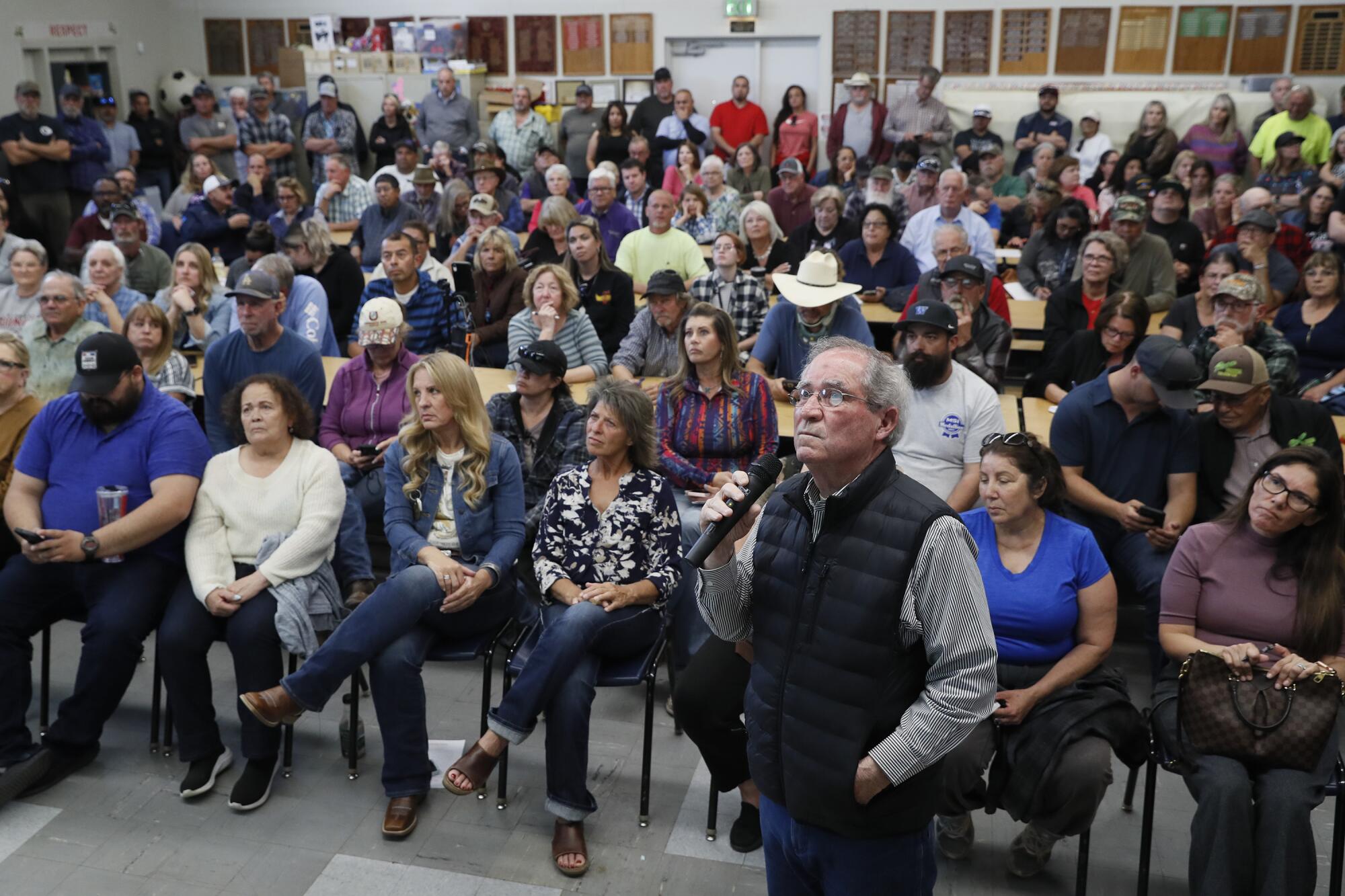
As those supplies got used up, surface wells began going dry, leaving nearly a million residents without access to safe, clean drinking water. Kern County, in the southernmost part of the valley, has more failing water systems than any other part of the state.
The constant draining of aquifers has also caused the soil to compact, translating into sinking ground levels. As a result, parts of the San Joaquin Valley floor have collapsed by as much as 20 feet over the last 65 years, including about 10 feet in the last two decades. Some areas are continuing to sink by as much as a foot per year or more — among the worst land subsidence on the planet.
In an effort to rein in the use of groundwater and slow those processes, the state in 2014 passed landmark legislation known as the Sustainable Groundwater Management Act, which seeks to set limits on well drilling and secure future supplies. But that’s just been another point of tension, Bagalayos said.
“It’s been a real struggle down here for folks to even accept the fact that there’s some Sacramento regulatory agency that’s going to have a say — even a little bit of say — about how we manage things down here,” she said.
She added that as the valley was developed over the last century, members of the Yokut and Miwok tribes that originally inhabited the Tulare Lake region were pushed out, and much of their knowledge of the landscape went with them.
“That is climate change,” Bagalayos said. “When you go into an ecosystem and you don’t have a relationship with it other than extractive, you are changing that climate. When you take out a forest, you have changed that climate. When you take out a wetland, you have changed that climate. When you drain a lake, you have changed that climate ... and that is what we’re contending with.”
More than a decade after California passed the Human Right to Water Act, about 1 million residents still lack access to clean, safe, affordable water.
But while the effects of climate change are already echoing throughout the region, forecasters say conditions will get even more extreme in the years to come.
That means more flash floods, but also longer drought — a trend known as “weather whiplash.” Such extremes are considerably concerning to farmers like Joe Del Bosque, who have come to depend on the valley’s bounty.
Del Bosque owns about 2,000 acres in Firebaugh, in Fresno County, where he grows organic crops such as honeydews, cantaloupes and mini watermelons.

During the most recent drought, conditions were so dry — and water allocations from the state were so low — that Del Bosque had to take about 40% of his acreage out of production.
“Our last resort was fallowing,” he said. He added that he had already spent nearly three decades adapting to drier conditions and installing water efficient drip irrigation across the farm at a cost of about $1.5 million. “We were prepared for drought, but we were not prepared for if our water supplier gives us nothing.”
Driving through dusty fields in his pickup truck, he pointed to a canal that he and his neighbors created to store water. They invested in about eight miles of plastic lining to prevent even a single drop from seeping into the ground.
Despite such efforts, the prolonged drought had a “horrendous economic impact” on his operation, he said, including the loss of crops and some longtime workers.
“Both my wife and I were farm workers in the past, and most of the workers we have have been with us for years,” Del Bosque said. “It’s a difficult thing to say, ‘We’re going to have to cut out your job, not because we want to, but because we just don’t have the water to continue growing that crop.’ ”
His parents were also farm workers, and he has spent nearly his entire life in the San Joaquin Valley. Still, he said he is worried about how the region he calls home will fare as conditions grow more extreme in the years to come.
“I’ve been working in agriculture since I was a boy, so I’ve got more than 70 years of experience, and even I am struggling to see how we can make it,” Del Bosque said. “I don’t know how the next generation is going to make it.”

Indeed, experts say the valley has reached an inflection point. Hot, dry, flooded and sinking, the region must once again evolve if it is to survive.
“The transition is underway and inevitable,” said Mullin, of UCLA. “What that transition will look like for individual communities is going to vary widely, and it will depend to some extent on communities’ readiness to take up opportunities.”
Farmers who may lose usable acreage under new groundwater regulations could find ways to capitalize on their land through renewable energy projects or other investments, she said. Though Kern continues to be the state’s top oil and gas producer, it is also home to some of the largest wind and solar farms in the U.S.
Mullin pointed to Fresno as an area that is already making climate gains through the state’s Transformative Climate Communities program, which has invested about $320 million toward 36 communities since 2016.
The program is focused on funding hyper-local projects in places that have been disproportionately affected by legacy pollution and other environmental hazards, said Emily Breslin, deputy director of communications with the California Strategic Growth Council, which administers the program. It is largely funded through California’s cap-and-trade program, which is using profits from polluters to invest in climate projects.
Among other efforts, the Transforming Fresno project has invested about $66.5 million toward 17 new acres of parks, 1,500 new trees, and 784 kilowatts of solar power on or adjacent to affordable housing in the area.
Breslin said the program could be a “salient model” for improving resilience in communities that have historically been sidelined, although more work is needed. Additional funding is expected under President Biden’s Inflation Reduction Act and other federal initiatives focused on environmental justice, she said.
“It’s going to take continued coordination, doubling down on investments and doubling down on coordinated policymaking in partnership with our communities,” she said.
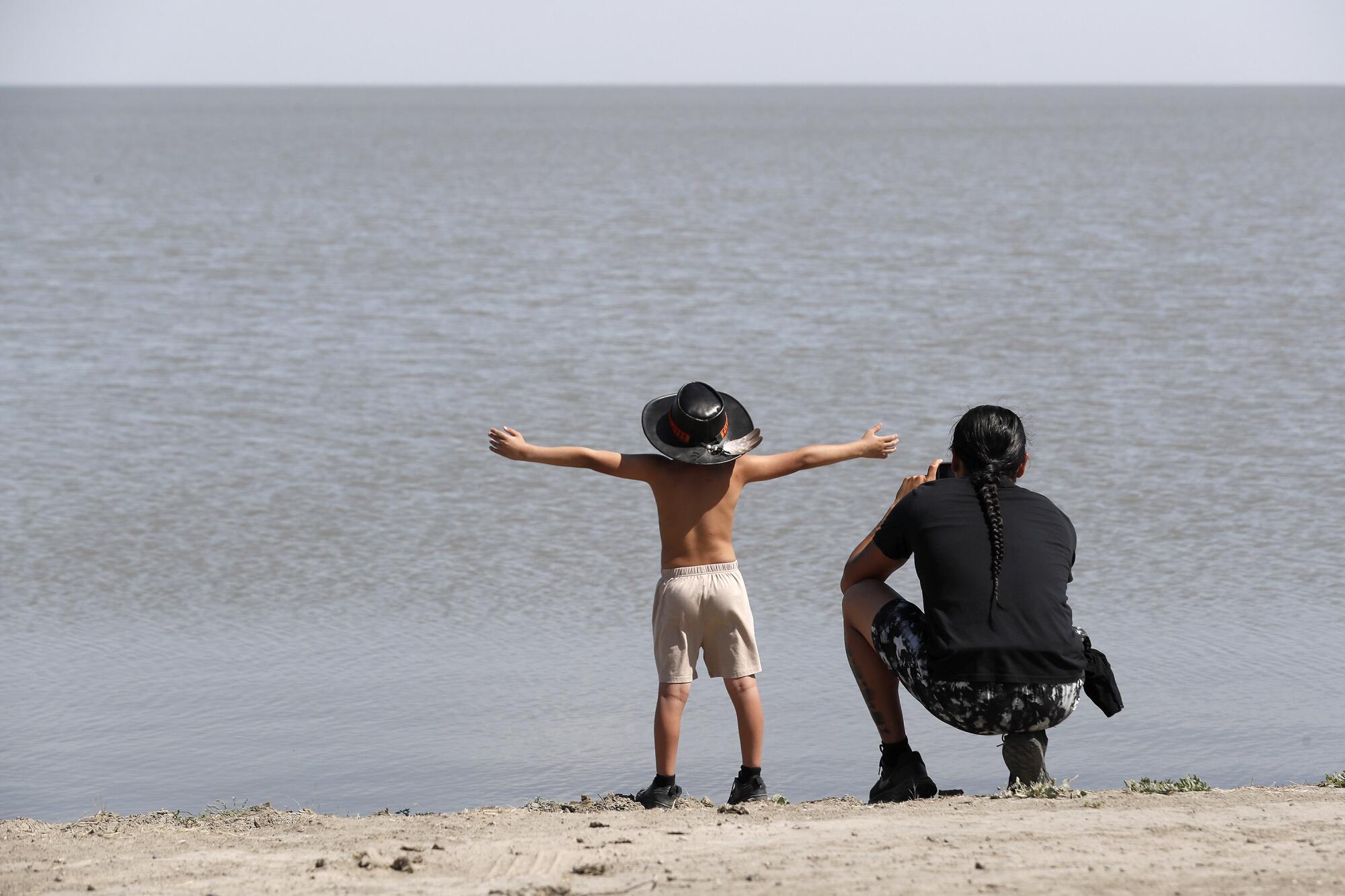
Pells, who is also a researcher at UC Merced’s Water Systems Management Lab, said changing the way soil is used could make a difference in the valley. Soils that are tilled less often will produce less dust and help improve air quality, and will also retain more water to help reduce flooding.
But many farmers are reluctant to change their practices because heavily tilled soils are more productive for their crops, she said.
“There are growers that are really invested in making that transition, but we need to see more government incentives, more support and more dialogue,” she said.
Projects with multiple benefits should also be prioritized, such as those that include habitat restoration components or improved workforce opportunities, Pells said.
“There needs to be room for communities to decide what’s best for them, what’s sustainable for them, what’s healthy for them,” she said, adding that many people don’t have other options or places to go. “Building resiliency, I think, should be the focus, and it needs to be community focused.”
Included in that resiliency is the introduction of new types of land use as more agriculture gets retired.
Earlier this year, some Indigenous leaders in the region called for the reemerged Tulare Lake to be preserved, saying that restoring the lake would provide more water storage and allow the valley’s original ecosystem to return. The lake could be the center of a new park, they said.
Such ideas are just the start. In addition to clean energy farms, new habitats and green spaces, communities could benefit from buffer zones that separate them from agriculture and its potential hazards such as pesticides and fertilizers, Fernandez-Bou said.
Those buffer zones would also create more space for clean industry, water treatment plants, infrastructure, jobs and even shops and restaurants.
“It will depend on how well we transition from so much agriculture to an amount of agriculture that is sustainable,” he said. “And in that sense, things can improve if we do the right thing — if we do the right transition.”
Times staff writer Ian James contributed to this report.

